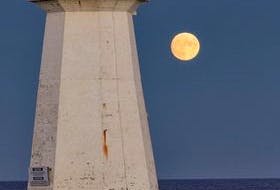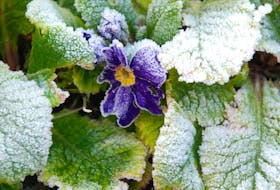Here in Atlantic Canada, if we could rename our seasons after the seven dwarfs, spring would be Bashful – shy and approaching with trepidation.
As the daylight hours grow, we become impatient: gardeners worry about frost, golfers are sick of seeing their breath when they look up to follow the ball and, well, we’re tired of tugging on our toques.
Grandma would never get excited about early May warmth until after the middle of the month.
Have you ever heard of the Three Chilly Saints? Meet Mamertus, Pancras and Gervais, the saints who celebrate their feasts each year on May 11, 12 and 13. The three became known in weather lore for predicting what were traditionally the three coldest days of the month.
Grandma used to say: “The Chilly Saints do not pass without a frost.”
In Europe’s not-too-distant past, parts of the continent remained rather cold through the middle of May, making planting before then risky.
German and Swiss lore refers to mid-May as “Iceman Days” and farmers knew better than to plant delicate seedlings before the Icemen had come and gone. The English and French saw the Three Chilly Saints as harbingers of a late spring frost. A fourth saint, St. Boniface, with his feast day on May 14, is occasionally linked with the other three.
The Three Chilly Saints have also been called the Ice Saints or Frost Saints and their three days are sometimes called "the blackthorn winter."
Because the people of medieval Europe who worked the land weren’t likely to be literate, they measured time by observing nature and the church calendar.
In Canada, our Victoria Day weekend is sometimes used as the date after which it is safe to plant early crops. In the same way, the Three Chilly Saints days were used to guide planters in their work.
Iceman Days wrap up today and tomorrow is the feast day of St. Boniface. According to Grandma, we should be OK after tomorrow, but there are never any guarantees. I’ve met many gardeners who don’t put seedlings out until the first weekend in June. Better safe than sorry.
- Want more weather information? Visit your weather page.
- Have a weather question, photo or drawing to share with Cindy Day? Email [email protected]
Cindy Day is the chief meteorologist for SaltWire Network









